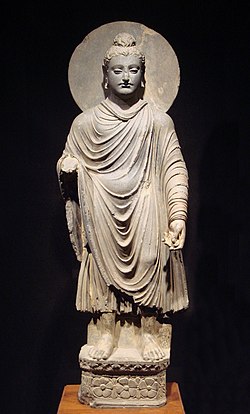
A draped garment (draped dress) [1] is a garment that is made of a single piece of cloth that is draped around the body; drapes are not cut away or stitched as in a tailored garment. Drapes can be held to the body by means of knotting, pinning, fibulae, clasps, sashes, belts, tying drawstrings, or just plain friction and gravity alone. Many draped garments consist of only one single piece. [2] [3]
Contents
An advanced form of the garment is the tailored dress, which is constructed from fabric that has been cut into pieces and stitched together to fit various parts of the body. In comparison to draped dresses, they are more fitted to the body. [1]























